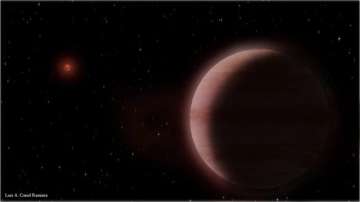Scientists have discovered a Saturn-like exoplanet using a radio telescope for the first time. The detected planet is known as TVLM 513b. This particular planet has a similar mass to Saturn and an orbit analogous that is pretty similar to Mercury.
The most special thing about this discovery is the use of a radio telescope. The team of astronomers used a radio telescope to track the movement of the star through the Milky Way, and identify the snaking wiggle in that movement as the star if gravitationally effected by an orbiting exoplanet.
It's the first time this technique has been successfully deployed using a radio telescope.
According to Science Alert, this wiggle effect can be detected in the way light wavelengths are stretched or compressed as the star moves around. This detection technique is called Doppler spectroscopy, or the radial velocity method, and it's one of the more common methods for finding exoplanets.
The astrometric technique is a little different. The Milky Way's stars aren't fixed in space; they move around the galaxy, and the study of this movement is called astrometry. So, rather than using changes in wavelengths, the astrometric technique looks for deviations from a straight line of movement.
This method can be used to detect exoplanets that Doppler spectroscopy can't, such as exoplanets circling in larger orbits around their stars.
"Our method complements the radial velocity method, which is more sensitive to planets orbiting in close orbits, while ours is more sensitive to massive planets in orbits further away from the star," said astrophysicist Gisela Ortiz-Leon of the Max Planck Institute for Radio Astronomy in Germany.
The astrometric technique is more commonly used to study binary stars, whose gravitational effect on each other is much more pronounced than the effect of a planet on a star. Only once before has the astrometric technique been used to discover an exoplanet (although it has been used to study already-known exoplanets), and never before with a radio telescope.
The research has been published in The Astronomical Journal.
